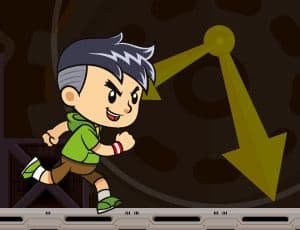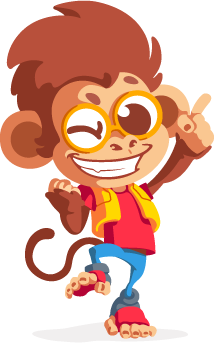Escola Games | Jogos Educativos
https://www.escolagames.com.br
Teacher's support sheet

Clock Mission
Take part in the Clock Mission by finding the right time!
Your mission is to get inside the clock and find the one that marks the time you’ll see on the top of your screen. You can jump, run, go ahead, or turn around to complete the challenge. Ready?

Teacher's tips
Level of Education: Elementary School
Subject: Mathematics
Theme: magnitudes and measures
Age: 6 to 9 years old
Teaching the concept of time is easy. As it is such an abstract concept, students have to have lots of opportunities to experiment and comprehend it. With this game students reinforce their knowledge and explore their motor skills to complete the challenge. [FIM-DICA]
Learner outcomes
To recognize the clock as a time measurement instrument;
To be a part of problem-solving situations involving time;
To comprehend and relate time measurement units to the social context;
To understand the organization of minutes and hours;
To learn the functions of the clock's hands;
To identify the hours and minutes on a clock.
Teachers' goals
To explore the relation between hour and minute;
To offer situations so that students use measurements and magnitudes to use on their daily lives outside the classroom;
To present students with different ways of measuring time
To show students the importance of time in our lives;
To work with fractions with the fragments of hours;
To reinforce content discussed during the classes.
Suggestions of approaches for the teacher
(Approach 1) Take hola hoops to the sports court and draw a clock on the floor. Then ask students to say the time.
(Approach 2) Plan a clock bingo. Students have to find the hours the teacher says.
(Approach 3) Draw paper watches for students to wear.
(Approach 4) Make a clock with movable hands and ask students to move them according to the time.
(Approach 5) Ask students to make a weekly schedule based on their lives (Time to wake up, go to school, do homework, go to bed, and so on).
(Approach 6) Present students with the difference between digital and analogical clocks.
(Approach 7) Put a clock on a wall in the classroom and ask students the time randomly.
(Approach 8) Take students outside the classroom, to the same place, in three different periods of the day, and ask them to observe and take notes.
(Approach 9) Ask students to write poems about time.
(Approach 10) Hand students a sheet of paper with many clocks without hands. Beside them, put some times for students to draw the clocks' hands.
(Approach 11) Show students how a sun watch works. Mathematics, science, and geography teachers can organize an interdisciplinary project about it.
More about the content
Start talking about time with its general concepts - morning, afternoon, and night. First, highlight activities that happen at a specific time, such as "we have breakfast in the morning and dinner at night.”
Then ask them when certain things happen. This will lead them to separate time into sections. Make sure students are confidently counting from 1 to 60. It will help them to measure time. Also, practice the five times table because it can be helpful.
Make a habit to say how long things take so students start understanding time's oganization: "Our break takes 20 minutes", and "our class takes an hour."
You can mark the time students take to do some activities to help them understand it.
After a while, introduce the concept of past and future time. "How long has it been since you have woken up?" “How long until you go home?”
Here is another BEST SCHOOL GAMES that works with time:
Telling time
